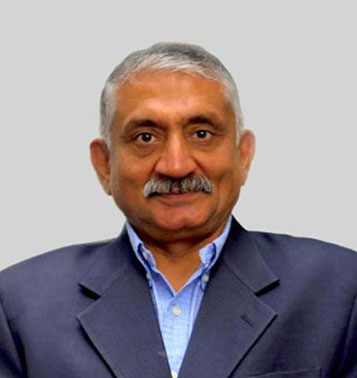PAFI VIEWS
Public affairs & advocacy - a career choice
Author - Ajay Khanna

Advocacy for policy making and adaptation towards policy execution have undergone multitude of changes. This has led to a transformation of Public Affairs & Advocacy into a strategic function for corporates in the last one and a half decade. The advocacy space garnered focus, feasibility and fairness. Today Public Affairs encompass several dimensions which include policy analysis, research and advocacy; risk management & analysis; governments, corporate and external affairs; stakeholder engagement, corporate communication & media management. The public affairs professionals also nurture long-term key relationships, building coalitions, crisis management and corporate social responsibility.
In today’s interconnected world of business, politics & society, geopolitics & governments have paramount impact on business. Advocacy for conducive business environment or seamless continuity of operations are no longer restrained to the walled boardrooms and revenue numbers but are more ingrained in collaborative engagement with governments, internal and external stakeholders.
Government’s views on Public Affairs and maturing of public policy to a function from ‘liasioning’ to leveraging knowledge and transparency have been phenomenal. Companies have strived towards this changing trajectory and today almost all major corporates have a dedicated Public Affairs/Public Policy/Advocacy function. One significant move that happened in the last decade was the introduction of the Pre-Legislative Consultation Policy (PLCP) in 2014 by the Central Government. This enthused a pivotal moment and increased public participation in the legislative process leading to fostering a more deliberative democracy.
This gradually evolving spectrum of Public Affairs and the developments have been captured by Public Affairs Forum of India (PAFI), voice of public affairs & advocacy in India through their various dialogues and discussions. Recently, some of these developments were released in a comprehensive report by PAFI -Public Affairs in India – An evolving Landscape, prepared in collaboration with the Indian School of Public Policy (ISPP). The report delved into the Public Affairs landscape which embodies participatory democracy, fostering transparency and inclusivity.
Some of the key areas the report highlighted are:
One: Public Affairs has expanded beyond government relations and now largely works keeping in view with the larger economic environment as the governments at the Centre and states seek active industry collaboration considering industry as the vital partners. To sustain and enhance the current participatory approach, continued efforts are needed to ensure uniform success in fostering a culture of participation and transparency throughout the legislative process.
Two: The various aspects uplifting the profession and the areas of concern. It also identified the areas that need further work to provide structure and consistency to the field as it evolves to keep pace with India’s rapidly advancing economy.
Three: The study emphasizes the need to champion knowledge-based engagement, transparency and inclusive practices and be proactive in keeping with the environment of consultative policy making representing the interests of businesses, the government, and society at large.
Four: Survey highlighted Public Affairs is well-entrenched in a large number of organizations, many of them operating a division for over 15 years. The data also showed a trend where 64 per cent of organizations established public affairs functions within the last 15 years. This coincides with the introduction of PLCP in 2014 and CSR in 2013, indicating policies impacting growth of Public Affairs in India. Many companies prefer small teams and choosing to outsource work in non-core issues to specialized consultancy work.
Five: Recruitment of Public Affairs professionals is time consuming and typically takes two to six months to fill a position and traditional word-of-mouth referrals being the primary channel for hiring. Relevant experience and education are the most important attributes and skillsets that companies seek for Policy professionals followed by communication skills and trainability. Though there has been an endeavor to build capacity by ISPP, there is still a huge demand to attract young talent to this profession.
Six: Public Affairs has undergone transformational change in response to a maturing policy environment characterized by developments such as the PLCP and aligning Corporate Social Responsibility (CSR) and Corporate Communications and ESG functions.
Seven: Most professionals chose policy impact as the most significant marker of success. Qualitative markers of impact are more popular. Respondents emphasized the need to develop robust frameworks for measuring impact of this key corporate function.
Eight: Training for Public Policy professionals happen once a year. Companies headquartered outside India train their employees more frequently than those headquartered in India.
Nine: While Public Affairs reflects as one of the rapidly evolving fields, it has its own challenges. The role of the Policy professional is often ill-defined, varying in scope as the sector changes. Sometime relevance and roles are unclear to the other functions within the organization. Standardization of roles and hiring practices will help streamline this aspect.
Ten: Public Affairs can be a well-paying career, valuing seniority and experience. It still needs to rationalize team structure with experience and seniority of members.
The Survey defines how Public Affairs has evolved into a holistic and strategic function for businesses in the last decade. While India has become the fastest growing economy in the world and is set to increase GDP from USD 3.5 trillion to USD 10 trillion by 2030, responsibility on Policy professionals increases manifold. The governments acknowledge the value of engaging with Public Policy professionals and business decisions are leveraged in consultation with them. In the Government’s vision of Vikshit Bharat, Public Affairs is all set to be the partner for policy prescriptions towards India’s growth story. I would reiterate Public Affairs would be among one of the most coveted career options in the coming days!
(The author is Co-Founder, Public Affairs Forum of India – PAFI. He is strategic advisor to corporates, think tanks and Industry Associations & also teaches at Indian School of Public Policy.)


